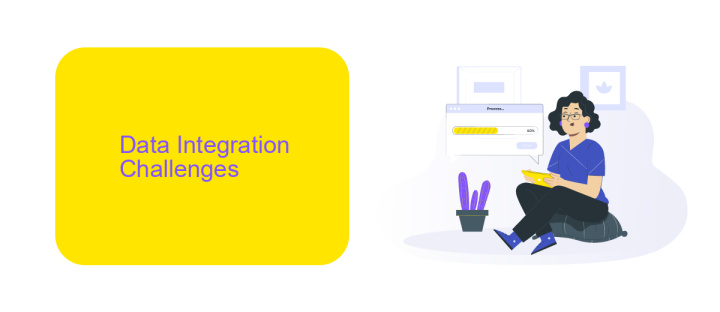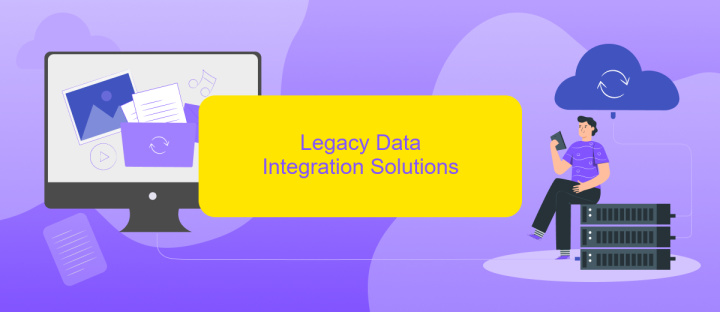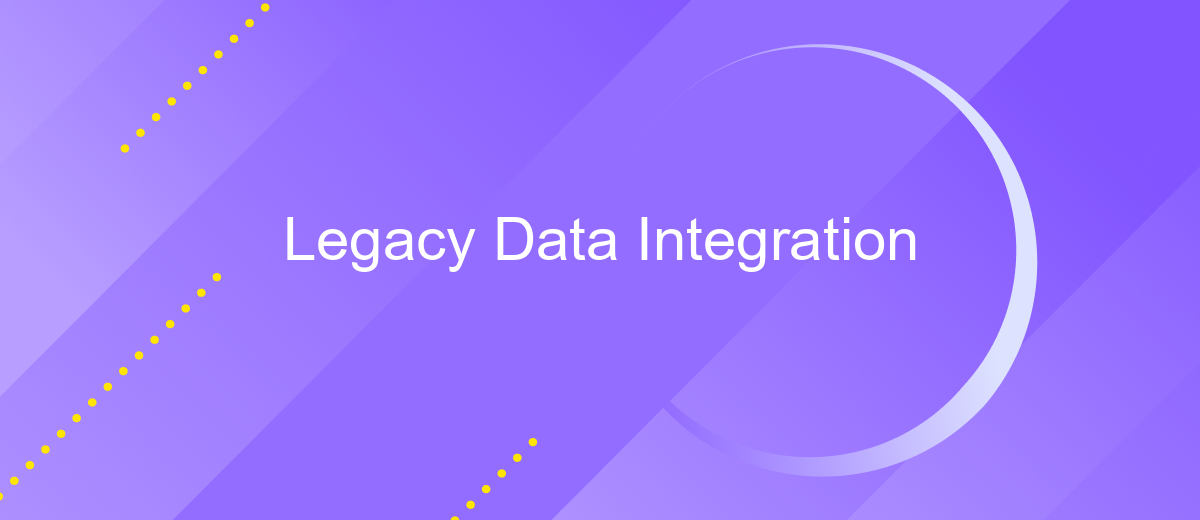Legacy Data Integration
Legacy data integration is a critical process for modern businesses aiming to leverage historical data while transitioning to new systems. It involves merging old data sources with contemporary platforms, ensuring seamless accessibility and usability. This integration not only preserves valuable information but also enhances decision-making and operational efficiency, bridging the gap between outdated systems and cutting-edge technologies.
Introduction
Legacy data integration is a critical challenge for organizations aiming to modernize their IT infrastructure while retaining valuable historical data. The process involves connecting outdated systems with new applications, ensuring seamless data flow and operational efficiency.
- Seamless data migration
- Real-time data synchronization
- Minimized downtime
- Enhanced data accuracy
Tools like ApiX-Drive facilitate legacy data integration by offering automated workflows that connect disparate systems without the need for extensive coding. By leveraging such services, businesses can achieve efficient data integration, reduce manual intervention, and ensure data consistency across platforms.
Data Integration Challenges

Integrating legacy data poses significant challenges due to the outdated nature of older systems. These systems often lack the necessary APIs and modern interfaces, making data extraction and synchronization a complex task. Additionally, legacy systems may use obsolete data formats and protocols, which require specialized tools and expertise to interpret and convert into contemporary standards. This often results in increased costs and extended timelines for integration projects, as well as potential data integrity issues during the conversion process.
Another major challenge is ensuring real-time data consistency and accuracy across multiple platforms. Legacy systems may not support real-time data updates, leading to discrepancies and outdated information. Utilizing modern integration services like ApiX-Drive can help mitigate these issues by providing automated data synchronization and transformation capabilities. ApiX-Drive simplifies the integration process by offering a wide range of pre-built connectors and a user-friendly interface, ensuring seamless data flow between legacy systems and modern applications. However, careful planning and continuous monitoring are essential to maintain data accuracy and system performance.
Legacy Data Integration Solutions

Legacy data integration can be a challenging task, requiring robust solutions to ensure seamless data flow between outdated systems and modern applications. To address these challenges, businesses often turn to specialized tools and services designed to bridge the gap between legacy data and contemporary platforms.
- Data Mapping: This involves creating a blueprint that defines how data from legacy systems will be transformed and loaded into new systems.
- ETL Processes: Extract, Transform, Load (ETL) tools are essential for migrating data from legacy systems, ensuring data is cleaned and formatted correctly for the new environment.
- Middleware Solutions: Middleware acts as a bridge, enabling communication between legacy systems and modern applications without extensive re-coding.
- API Integration: Tools like ApiX-Drive facilitate seamless API integration, allowing legacy systems to communicate efficiently with new software solutions.
By leveraging these solutions, businesses can effectively integrate legacy data into modern systems, ensuring data consistency and operational efficiency. Services like ApiX-Drive offer a user-friendly interface and powerful automation capabilities, making the integration process smoother and more manageable.
Benefits and Considerations

Integrating legacy data systems into modern infrastructure offers numerous benefits, including enhanced operational efficiency and improved data accessibility. By bridging the gap between old and new systems, organizations can leverage historical data to inform strategic decisions and drive innovation.
However, the process of legacy data integration is not without its challenges. Compatibility issues, data security concerns, and the complexity of migrating large volumes of data can pose significant hurdles. It is crucial to carefully plan and execute the integration process to avoid disruptions and ensure data integrity.
- Enhanced data accessibility and usability
- Improved decision-making capabilities
- Cost savings through optimized processes
- Increased operational efficiency
To facilitate seamless legacy data integration, services like ApiX-Drive can be invaluable. ApiX-Drive offers a user-friendly platform for connecting disparate systems, automating data transfers, and ensuring data consistency. By utilizing such tools, organizations can streamline the integration process, minimize risks, and maximize the benefits of their data assets.
- Automate the work of an online store or landing
- Empower through integration
- Don't spend money on programmers and integrators
- Save time by automating routine tasks
Conclusion
Integrating legacy data systems is a complex yet crucial task for modern businesses aiming to leverage historical data for contemporary analytics and decision-making. The process involves addressing challenges such as data silos, compatibility issues, and the need for real-time data access. Effective legacy data integration ensures that valuable historical data is not lost and can be utilized to gain insights, drive innovation, and enhance operational efficiency.
Tools and services like ApiX-Drive offer robust solutions for seamless data integration. By automating data transfer and synchronization between legacy systems and modern applications, ApiX-Drive reduces the manual effort and potential errors involved in the integration process. This not only saves time but also ensures data accuracy and consistency. As businesses continue to evolve, leveraging such integration platforms will be essential in maintaining a competitive edge and achieving long-term success.
FAQ
What is Legacy Data Integration?
Why is Legacy Data Integration important?
What are the common challenges in Legacy Data Integration?
How can ApiX-Drive help with Legacy Data Integration?
What are some best practices for Legacy Data Integration?
Apix-Drive is a universal tool that will quickly streamline any workflow, freeing you from routine and possible financial losses. Try ApiX-Drive in action and see how useful it is for you personally. In the meantime, when you are setting up connections between systems, think about where you are investing your free time, because now you will have much more of it.


